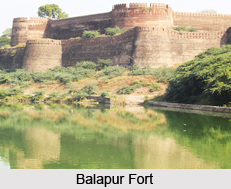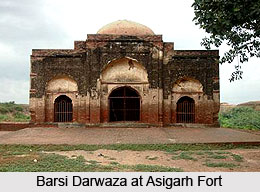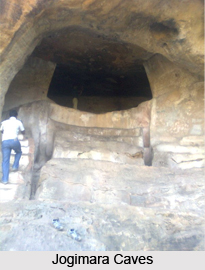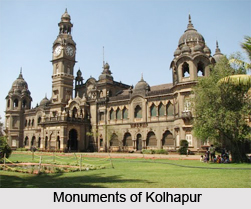 The monuments of Kolhapur consist of a number of religious as well as historical landmarks in the history of India. Situated about 144 south-east of Pune, the monuments of Kolhapur are displayed amidst a number of ancient temples and fine nineteenth century buildings. A rich history precedes the existence of Kolhapur. The Hindu era lasted till 1347, followed by the Muslim rule which was from 1347-1700. The Yadava dynasty ruled here till the thirteenth. They were followed by the rulers of the Mughals dynasty, and finally the Maratha ruler Chatrapati Shivaji captured the town in 1675.The ruling dynasty at Kolhapur is descended from Shivaji`s younger son, who forged a kingdom from the southern estates. Under Shahu Chhatrapati a reforming government was established in 1894 which turned Kolhapur into a model native state.
The monuments of Kolhapur consist of a number of religious as well as historical landmarks in the history of India. Situated about 144 south-east of Pune, the monuments of Kolhapur are displayed amidst a number of ancient temples and fine nineteenth century buildings. A rich history precedes the existence of Kolhapur. The Hindu era lasted till 1347, followed by the Muslim rule which was from 1347-1700. The Yadava dynasty ruled here till the thirteenth. They were followed by the rulers of the Mughals dynasty, and finally the Maratha ruler Chatrapati Shivaji captured the town in 1675.The ruling dynasty at Kolhapur is descended from Shivaji`s younger son, who forged a kingdom from the southern estates. Under Shahu Chhatrapati a reforming government was established in 1894 which turned Kolhapur into a model native state.
A number of fine buildings were built by the ruling dynasties over the centuries. The rich architectural legacy of Kohlapur has been seen in a number of historical monuments.
There are a number of fine buildings which mark the reforming zeal of the dynasty in the late 19th century.
Historical Monuments of Kohlapur
The New Palace, by Major Charles Mant, Royal Engineers, is a remarkable piece of Victorian eclecticism. Built in grey stone around a central courtyard, it is dominated by a lofty clock tower, crowned by a cupola. Superficially Indo-Saracenic in style, the building incorporates many references to local architecture and displays a fine fusion of Hindu and Jain styles from Gujarat and Rajasthan. There are elements from the old palace and local temples, from the Jain temples at Ahmedabad and from the hill fortresses at Deeg and Mathura. The entire composition is an architectural tribute to Maratha resistance to Mughal domination. The interior is equally lavish and eclectic in inspiration, adorned with trophies of game tiger heads and silver. The New Palace has now been converted into the Chatrapati Sahu Museum. It houses a fascinating collection of artifacts, like rare paintings, swords, daggers, pistols, items of use of the Royal family etc.
The former British Residency lies nearby, together with All Saints` Church Built in the late 19the century, this beautiful church is almost 120 years old.
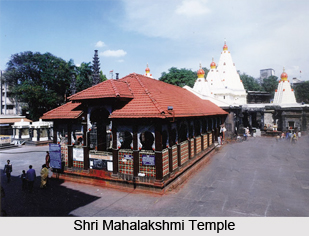 The Palace Square is in the centre of the town. It is entered via the Nakkar Khana or Music Gallery.
The Palace Square is in the centre of the town. It is entered via the Nakkar Khana or Music Gallery.
On the right is the Rajwada or Old Palace, which was badly damaged by fire in 1810.It, is a remarkably huge and splendid structure adorned with filigree work done in stone. It has a central stone gateway and wooden pillars. The second floor comprises the Durbar Hall, in which there is a picture of Mant`s cenotaph in Florence for Maharaja Rajaram I, who died there in 1870. In the armoury a sword reputedly belonging to Aurangzeb and another given by Sir John Malcolm to Pratap Singh are to be found.
Also situated inside the palace is a temple dedicated to Goddess Bhawani.The temple is held in high regard by the people of the city.
On the south side of the square are the Treasury and other government offices.
The construction of the Town Hall Museum was commenced in 1872, and it ended after almost four years. Most of the items displayed here were unearthed during the Brahmagiri excavations. These include bronze artefacts, filigree work in sandalwood and ivory, works of master artists of the region, pottery, antiques, etc.
Religious Monuments of Kohlapur
Behind the Treasury is located the Shri Mahalakshmi temple. It is dedicated to the Mother Goddess. The construction work on it was started in the 7th century AD by the rulers of Chalukya dynasty.The main idol of the temple is considered to be a Swayambhu, or naturally occurring deity. It is a monolith encrusted with precious stones. The temple complex also houses various other deities- Kartikaswami, Kashi Vishweshwar, Sheshashayi, Mahasaraswati, Mahakali, Siddhivinayak, Shree Dutta and Shree Ram.
A rather unique temple found here is the Binkhambi Ganesh Mandir.The remarkable feature of this temple is that it stands completely without any pillars. The temple is dedicated to Lord Ganesha and is among the major attractions of then city.
Kolhapur has a number of ancient shrines as well. In 1880 a 3rd-century Buddhist crystal relic casket was discovered in a nearby stupa. To the north of the town is Brahmapuri Hill, where Brahmins are cremated. Nearby in the Rani`s Garden is the spot where the ruling family were cremated. Beyond is a 20 ft high stone gateway which leads to the Cenotaphs of Raja Shambhuji (1760), Shivaji (1762) and, to the left, his mother, Tara Bai.
Kolhapur, thus, abounds in a number of monuments of an ancient age. They are counted not only within Kolhapur, but also figure prominently among all the monuments of Maharashtra.


